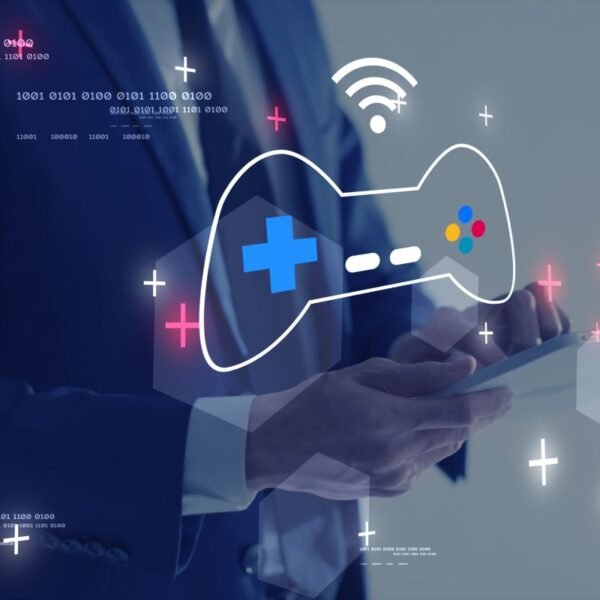The modern workforce has undergone a seismic shift in recent years, with remote work becoming an increasingly prevalent and viable option for businesses and employees alike. Enabled by remarkable technological advancements, remote work has broken down geographical barriers and ushered in a new era of flexibility and efficiency. However, in the midst of this digital revolution, it is essential to recognize that while remote work offers numerous benefits, it cannot wholly replace the invaluable essence of in-person interaction. This article delves into the reasons why in-person interaction remains critical even in the age of remote work, highlighting the unique human dimensions it brings to collaboration, communication, and overall workplace dynamics.
Here are some pointers on the remote work:
1. Fostering Genuine Connections

In-person interaction offers a level of human connection that is hard to replicate through virtual means. Face-to-face conversations allow individuals to read non-verbal cues, interpret body language, and engage in real-time conversations, which are vital components of building trust and rapport. Humans need to see each other’s actions, movements, and facial expressions while interacting in a clear and non-disturbing way to build a feeling of belonging to each other. Authentic connections formed during in-person meetings transcend professional boundaries and contribute to a more cohesive and harmonious work environment. It proves fruitful in the long run and helps to survive in the competitive environment.
2. Boosting Effective Communication
Despite the vast array of digital communication tools available, nuances and subtleties can be lost in virtual conversations. In-person interactions enable team members to communicate complex ideas more effectively, resulting in clearer and more concise exchanges. It lessens the number of errors in daily operations unlike remote work. The immediate feedback loop that in-person communication provides minimizes the chances of misunderstandings and misinterpretations, ultimately enhancing overall team productivity.
3. Encouraging Collaborative Innovation
Innovation thrives in an environment that fosters creativity and collaboration. While remote work allows for virtual brainstorming sessions, in-person interactions often stimulate dynamic idea-sharing and energized problem-solving. The human mind works in surprising ways. No other two people will hold the same view on two things. Plus, no two people will understand the other person’s view unless explained. That’s the power of creativity. The spontaneous exchange of ideas in a shared physical space can spark creativity, leading to breakthroughs and novel solutions that might be elusive in remote settings.
4. Strengthening Team Cohesion

A cohesive team is the bedrock of successful organizations. In-person interactions facilitate team-building activities, workshops, and social events that foster a sense of belonging and camaraderie among team members. It enhances the relationship between employees and peers by helping each other, being each other’s guiding light and, brings them together emotionally. Empathy between them is increased. Shared experiences and a shared sense of purpose forged through in-person connections lead to a more motivated and engaged workforce.
5. Efficient Conflict Resolution
Even in the most collaborative teams, conflicts may arise from time to time. In-person interactions provide an opportunity for conflict resolution that is more immediate and personal. Issues are solved then and there with no grudges against each other. Addressing concerns face-to-face can prevent misunderstandings from escalating and promote a harmonious working environment. In-person interaction keeps no room for misinterpretations and confusion.
6. Facilitating Seamless Onboarding and Training
The onboarding process for new employees is vital in setting them up for success within an organization. In-person onboarding and training sessions provide a more immersive and interactive experience, allowing new hires to familiarize themselves with company culture, values, and processes. Man is a social animal, and we learn the best when done practically. Personal interactions with mentors or trainers help build a strong foundation for new employees, accelerating their integration into the team.
7. Nurturing Client and Customer Relations

For businesses, building and maintaining strong client and customer relationships is pivotal to success. Virtual meets come with some obstacles like less internet bandwidth, background noises obstructing the meeting flow etc. While virtual communication tools have their place, face-to-face interactions can have a lasting impact on clients. The personal touch and attentiveness conveyed through in-person meetings create a stronger bond and foster trust, leading to increased customer satisfaction and loyalty.
8. Reinforcing Organizational Culture
Company culture plays a crucial role in employee satisfaction and retention. In-person interactions provide an opportunity for employees to experience the organization’s ethos firsthand. Interactions other than work, during breaks, or while entering the office and heading home too, these things cannot replace virtual interactions. Shared experiences, team rituals, and workplace interactions all contribute to reinforcing a positive and cohesive company culture.
9. Augmenting Employee Well-Being
The rise of remote work has brought forth various benefits, such as flexibility and work-life balance. However, prolonged remote work can lead to feelings of isolation and loneliness. It leads to frustration and non-productivity. In-person interactions at the workplace can help alleviate these feelings and foster a sense of community, contributing to better overall employee well-being. The activities that are done in the organization for fun can never be replaced by virtual team-building activities. We need to interact and talk to someone on a constant basis, especially if we work in the creative field. We need to discuss ideas, views and discuss the pitch which is going to the client.
Conclusion:
Achieving Balance: Embracing a Hybrid Approach
In conclusion, while remote work is undeniably transforming the modern workforce, in-person interaction remains an indispensable element that adds depth and richness to workplace dynamics. Organizations can strike a balance by adopting a hybrid approach that incorporates both remote work and in-person collaboration. By leveraging the best of both worlds, businesses can create a thriving work environment that harnesses the potential of remote work while cherishing the irreplaceable value of genuine human connections.
In a digital age where technology continues to reshape our work practices, in-person interaction emerges as the powerful glue that binds teams together empowers innovation, and fosters the human touch necessary for a prosperous and cohesive work environment. As we navigate the evolving landscape of remote work, let us not forget the enduring significance of coming together in person to achieve extraordinary heights of collaboration and success.









